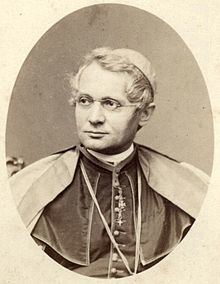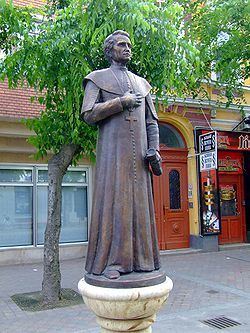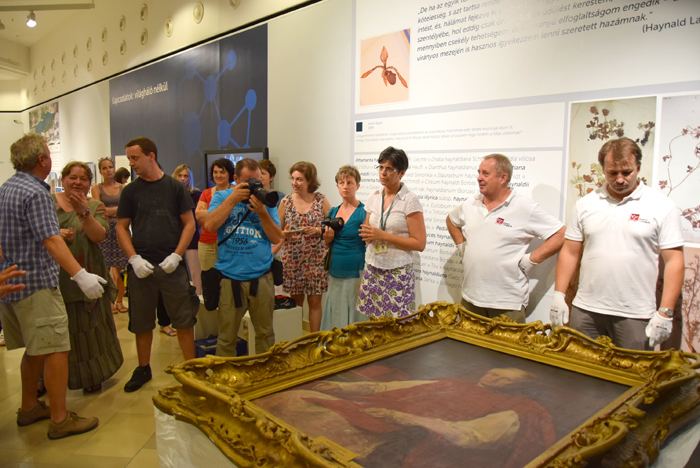Name Lajos Haynald Created cardinal May 12, 1879 Successor Juraj Csaszka Ordination October 15, 1839 | Term ended 4 July 1891 Consecration August 15, 1852 Installed 17 May 1867 Rank Cardinal | |
 | ||
Predecessor Joszef Krivinai Lonovics Archdiocese Roman Catholic Archdiocese of Kalocsa-Kecskemet | ||
Stephan Franz Lajos (or Ludwig) Haynald (3 October 1816, at Szécsény – 3 July 1891, at Kalocsa) was a Hungarian Archbishop of Kalocsa-Bács, naturalist, and Cardinal.

Life

Having completed his studies in the secondary schools, he entered the Emericianum at Pozsony (Presburg) in 1830, remaining there for one year. He studied philosophy at Nagyszombat (Tyrnau) in 1831, theology at Viennain 1833; entered holy orders on 15 October 1839, and received the degree of Doctor of Theology in 1841.

After a brief period spent in the care of souls, he became professor of theology at the seminary at Esztergom in 1842. The prince-primate, Kopácsy, appointed him his secretary in 1846, but before he had entered upon the duties of that office, dispatched him abroad to study the training of pastors and ecclesiastical administration. Haynald probably was the first Hungarian to study such subjects in foreign countries. He passed most of the time that he spent on his mission in Paris.
On his return he was appointed chancellor-director to the prince-primate, early in 1848. When the Hungarian parliament proclaimed the independence of Hungary on 14 April 1849, Haynald refused to publish this declaration. The consequence was that he lost his position, whereupon he returned to his birthplace Szécsény. At the close of the Revolutionary War he was restored to his office; on 15 September 1851, he was appointed coadjutor to the Bishop of Transylvania, Nicholas Kovács, whom he succeeded on 15 October 1852.
On the publication of the October diploma, in 1860, Haynald became one of the champions of the union of Transylvania with Hungary. His political opinions and activity thereupon brought him into conflict with the Viennese Government. Count Francis Nádasdy, head of the Transylvanian Chancellery, accused Haynald of disloyalty. Haynald went to Vienna and presented a memorial in which he set forth his political views. Notwithstanding this, the dissensions between the Government and Haynald continued, and resulted in Haynald's resignation in 1864.
Pope Pius IX summoned him to Rome and appointed him titular Archbishop of Carthage.
Until 1867 he was in Rome as a member of the Congregation for Extraordinary Ecclesiastical Affairs. After the restoration of the Hungarian constitution, Haynald was appointed Archbishop of Kalocsa-Bács, in 1867, at the instance of Baron Joseph Eötvös.
He played an important part in the First Vatican Council of 1870, being, with George Strossmayer, Bishop of Diakovár, one of the foremost opponents of the dogma of papal infallibility, although he submitted to the decree of the council. Pope Leo XIII made Haynald a cardinal in 1879.
As bishop and archbishop, he aimed chiefly to maintain ecclesiastical discipline and to raise the standard of studies in the public schools. His bequests amounted to nearly five millions of gulden. While still a young priest he devoted himself to botany and made a large collection of plants and of books, which subsequently came into the possession of the Hungarian National Museum. The Hungarian Academy of Sciences made him an honorary member.
